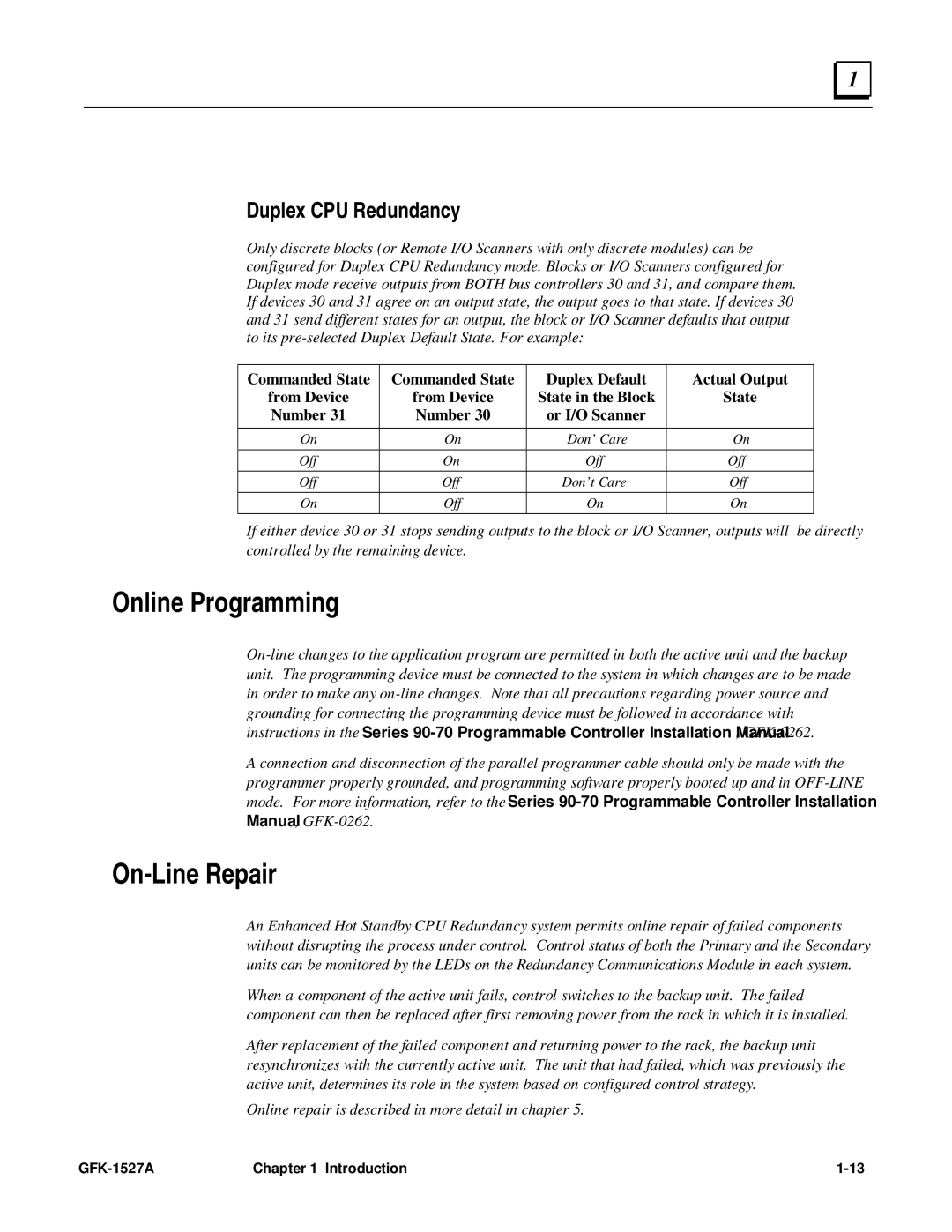1 |
Duplex CPU Redundancy
Only discrete blocks (or Remote I/O Scanners with only discrete modules) can be configured for Duplex CPU Redundancy mode. Blocks or I/O Scanners configured for Duplex mode receive outputs from BOTH bus controllers 30 and 31, and compare them. If devices 30 and 31 agree on an output state, the output goes to that state. If devices 30 and 31 send different states for an output, the block or I/O Scanner defaults that output to its
Commanded State | Commanded State | Duplex Default | Actual Output |
from Device | from Device | State in the Block | State |
Number 31 | Number 30 | or I/O Scanner |
|
|
|
|
|
On | On | Don’ Care | On |
|
|
|
|
Off | On | Off | Off |
|
|
|
|
Off | Off | Don’t Care | Off |
|
|
|
|
On | Off | On | On |
|
|
|
|
If either device 30 or 31 stops sending outputs to the block or I/O Scanner, outputs will be directly controlled by the remaining device.
Online Programming
A connection and disconnection of the parallel programmer cable should only be made with the programmer properly grounded, and programming software properly booted up and in
On-Line Repair
An Enhanced Hot Standby CPU Redundancy system permits online repair of failed components without disrupting the process under control. Control status of both the Primary and the Secondary units can be monitored by the LEDs on the Redundancy Communications Module in each system.
When a component of the active unit fails, control switches to the backup unit. The failed component can then be replaced after first removing power from the rack in which it is installed.
After replacement of the failed component and returning power to the rack, the backup unit resynchronizes with the currently active unit. The unit that had failed, which was previously the active unit, determines its role in the system based on configured control strategy.
Online repair is described in more detail in chapter 5.
Chapter 1 Introduction |
